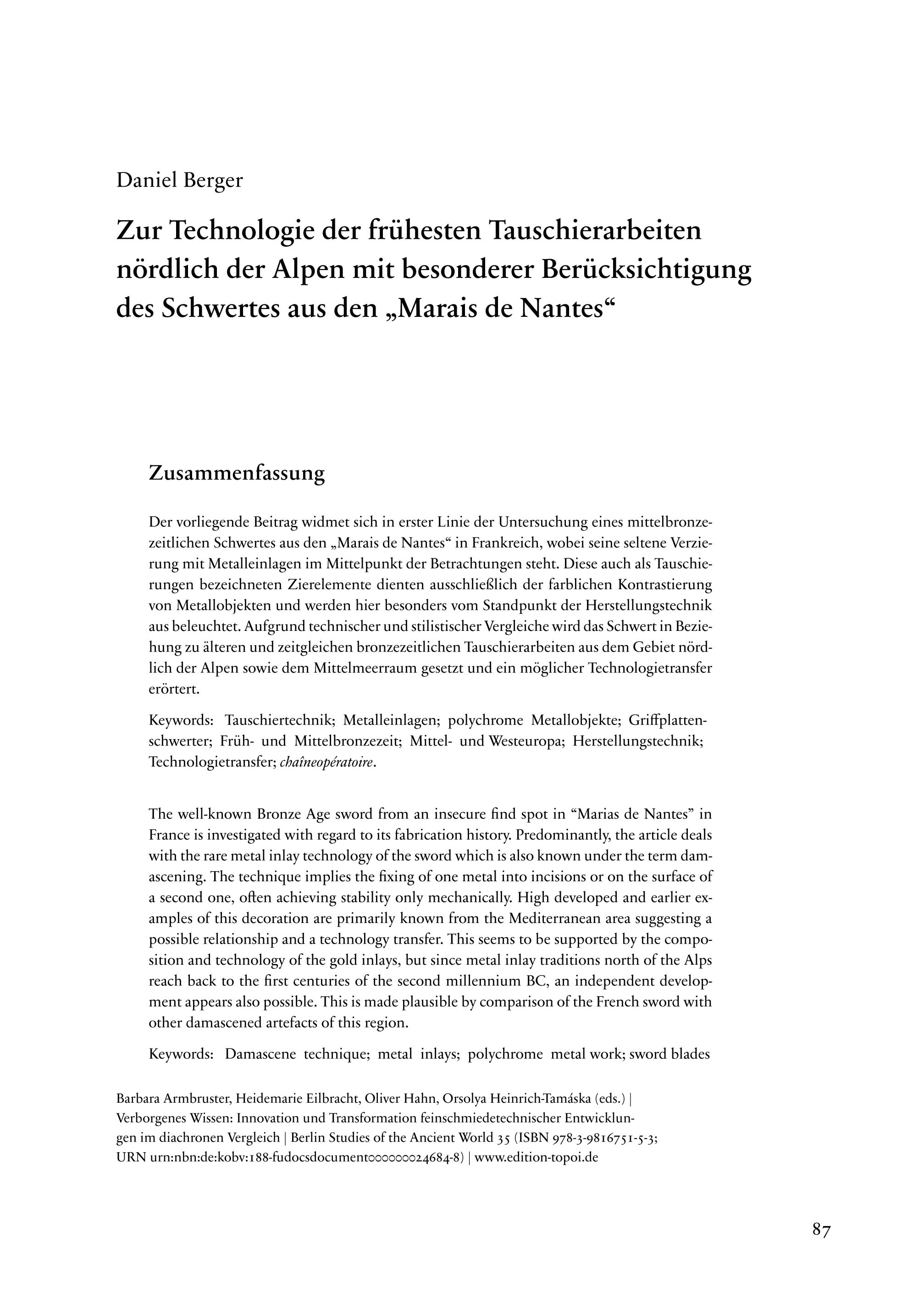Zur Technologie der frühesten Tauschierarbeiten nördlich der Alpen mit besonderer Berücksichtigung des Schwertes aus den „Marais de Nantes“
The well-known Bronze Age sword from an insecure find spot in “Marias de Nantes” in France is investigated with regard to its fabrication history. Predominantly, the article deals with the rare metal inlay technology of the sword which is also known under the term damascening. The technique implies the fixing of one metal into incisions or on the surface of a second one, oten achieving stability only mechanically. High developed and earlier examples of this decoration are primarily known from the Mediterranean area suggesting a possible relationship and a technology transfer. This seems to be supported by the composition and technology of the gold inlays, but since metal inlay traditions north of the Alps reach back to the first centuries of the second millennium BC, an independent development appears also possible. This is made plausible by comparison of the French sword with other damascened artefacts of this region.
Der vorliegende Beitrag widmet sich in erster Linie der Untersuchung eines mittelbronzezeitlichen Schwertes aus den „Marais de Nantes“ in Frankreich, wobei seine seltene Verzierung mit Metalleinlagen im Mittelpunkt der Betrachtungen steht. Diese auch als Tauschierungen bezeichneten Zierelemente dienten ausschließlich der farblichen Kontrastierung von Metallobjekten und werden hier besonders vom Standpunkt der Herstellungstechnik aus beleuchtet. Aufgrund technischer und stilistischer Vergleiche wird das Schwert in Beziehung zu älteren und zeitgleichen bronzezeitlichen Tauschierarbeiten aus dem Gebiet nördlich der Alpen sowie dem Mittelmeerraum gesetzt und ein möglicher Technologietransfer erörtert.

